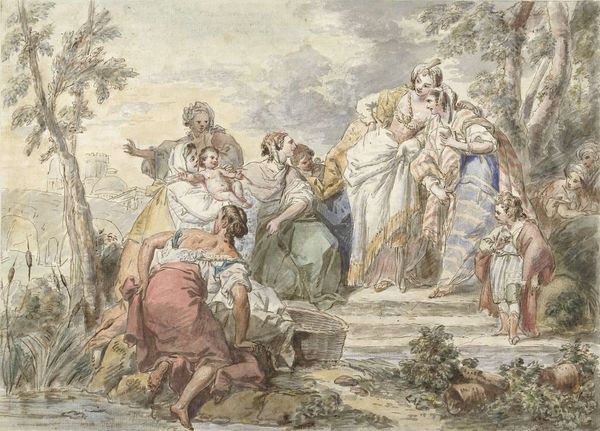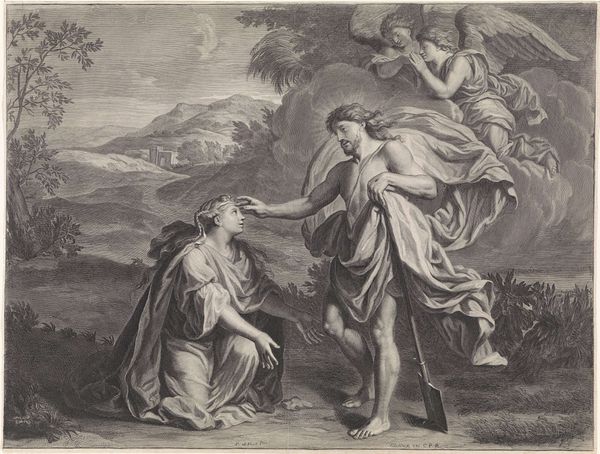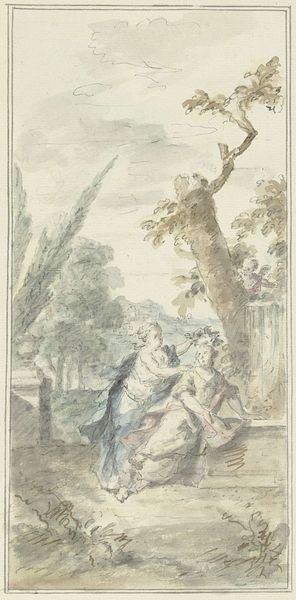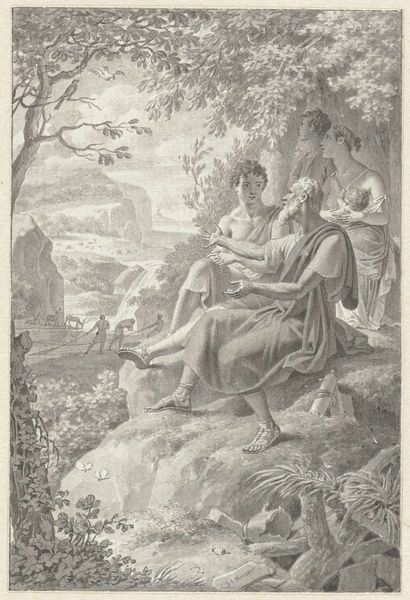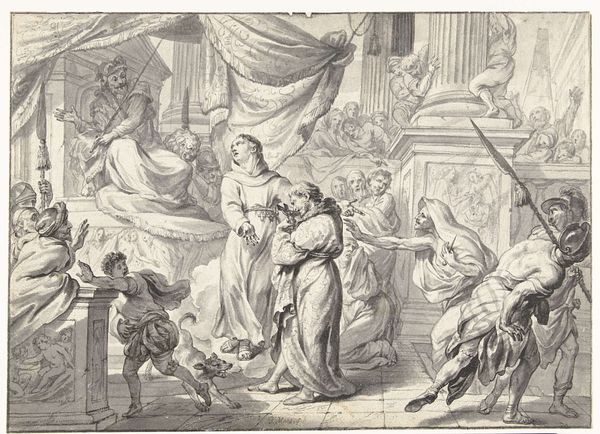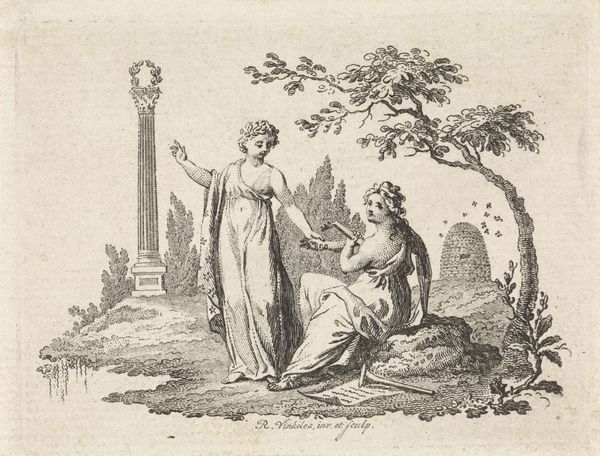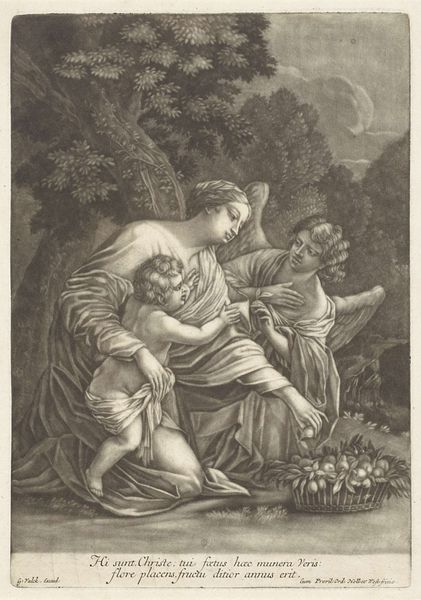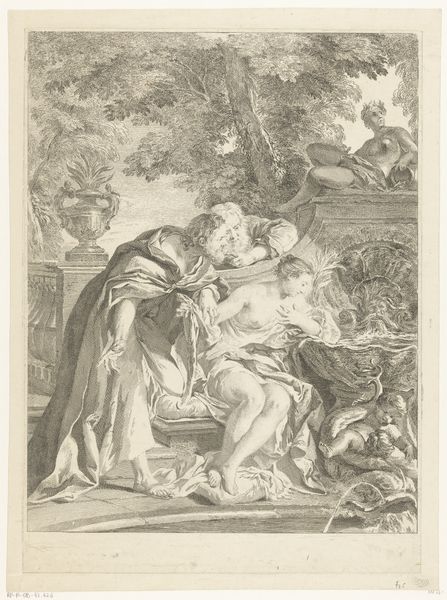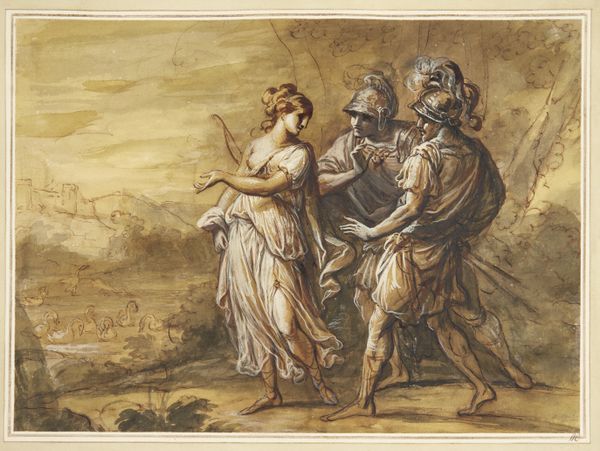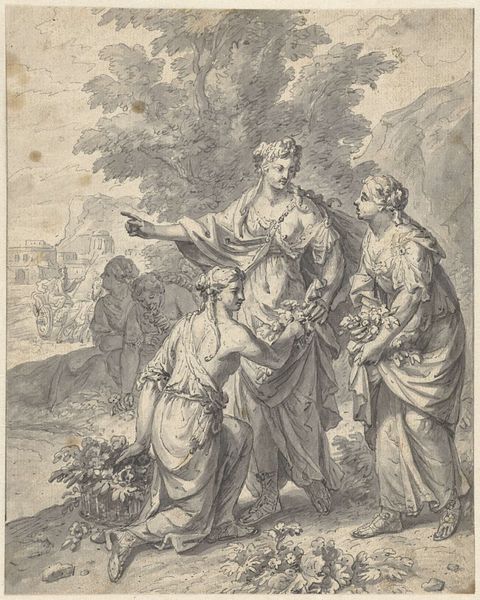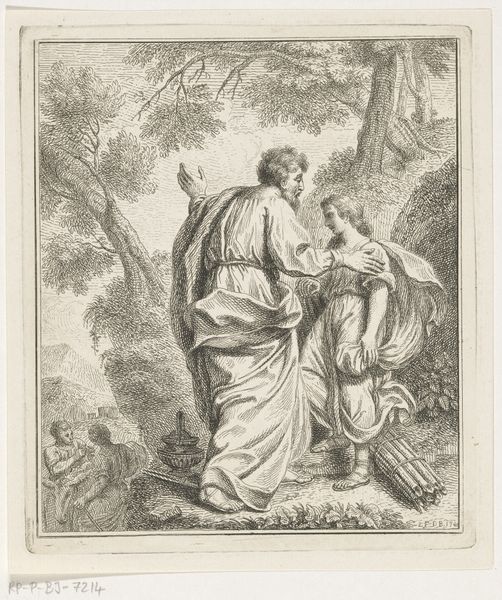
An Allegory of Empress Josephine as Patroness of the Gardens at Malmaison c. 1805 - 1806
0:00
0:00
painting, watercolor
#
portrait
#
allegory
#
painting
#
landscape
#
oil painting
#
watercolor
#
romanticism
#
history-painting
#
watercolor
Copyright: Public Domain: Artvee
Editor: This is François Gérard's "An Allegory of Empress Josephine as Patroness of the Gardens at Malmaison," circa 1805-1806. The colors are so delicate, almost like a carefully hand-painted postcard. What grabs your attention when you look at this work? Curator: Well, considering its historical moment, the immediate thing I see is not just the romantic portrayal of Josephine, but how Gérard uses the allegory itself as a form of propaganda. Consider the industrial underpinnings necessary for the greenhouses depicted; these are monuments to consumption and a specific social order enabled by industrial materials and processes. Editor: Propaganda through horticulture, interesting! The greenhouse looks enormous, almost like a factory... Curator: Exactly! And the depiction of Josephine in classical garb, placing a wreath on her own bust – it all contributes to the construction of an image. The labor involved in building and maintaining the gardens, sourcing the materials for the building, even the creation of the watercolor itself, all point to systems of power and production. Don’t you find the contrast between the delicacy of the watercolor medium and the grandness of the message quite telling? Editor: I do, especially with the framed birds and fountains to either side, reinforcing control over nature itself as a form of power. How different is this compared to, say, art created using oil painting at that time? Curator: It’s a matter of scale, and perceived value. Watercolors were often seen as studies, less serious endeavors. By using watercolor, Gérard almost domesticates the grand allegory, linking Josephine's patronage with accessible and widely-consumed imagery. It blurs the lines between 'high' art and the consumable world of prints and decor. Editor: That makes so much sense! Thinking about it now, the mass production of prints after this piece allowed it to spread an idealized view of Josephine to a much wider audience. Curator: Precisely. And that widespread image, that’s where its power truly resided. Now, next time you see an idyllic scene, think about the materials, the labor, and the social machinery that brings it into being. Editor: I will definitely see landscapes with new eyes. Thanks for unraveling the many layers embedded within this one!
Comments
No comments
Be the first to comment and join the conversation on the ultimate creative platform.
